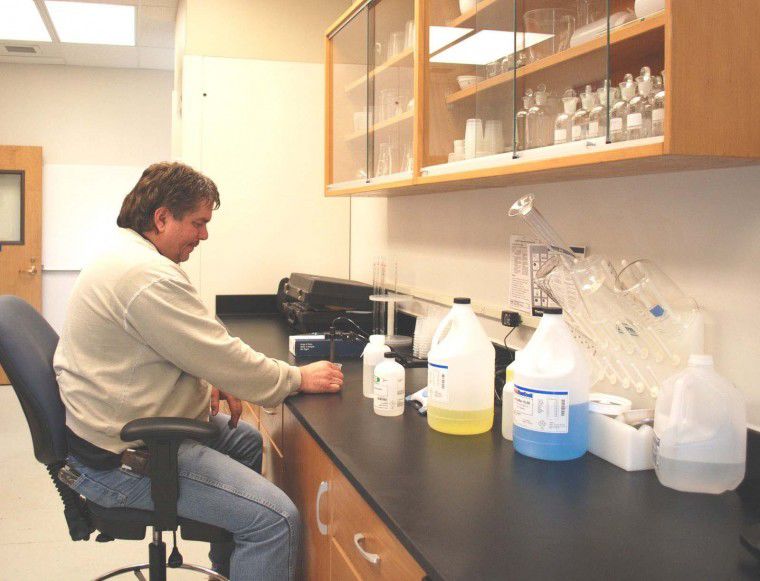Sewage plant uses high-tech, no toxic chemicals
Published 5:00 pm Tuesday, March 29, 2011

- Enterprise wastewater treatment plant operator Dave Wilkie analyzes a sample in the on-site laboratory.
ENTERPRISE Enterprise residents have endured higher-than-average sewer bills over the past several years to help pay off an $8 million loan the city took to build a new wastewater treatment plant and improve its collection system.
The start-up date for the plant was Oct. 1, 2009.
Trending
The city was required by the Oregon Department of Environmental Quality to build a new facility or to upgrade its old plant. The city chose to build a new plant because even with expensive upgrades the old plant would have been incapable of meeting DEQ requirements.
Most of the project was funded through a loan from the DEQ with a 20-year payback term.
In order to finance the new plant, the city had to raise sewer rates. In January 2005, the monthly residential rate for Enterprises city sewer service was $18.50 per month. Since then, the residential sewer bill has risen to $50.60 per month.
The plant takes in the citys wastewater and releases disinfected, clear water that is far cleaner than the effluent from the old plant and well within DEQ limitations.
The wastewater is treated without using a drop of chlorine or other toxic chemicals, city public works Director Ron Neil said.
He explained that the new plant replaced one that had been built in the 1950s. The old plant was incapable of disinfecting wastewater to meet state and federal standards.
Trending
It didnt have the ability to meet permit levels nor would it have with an upgrade, Neil said.
He said the decision to build the new plant was also driven by changes in state and federal regulations.
Historically, the city didnt have to meet ammonia levels. The old plant wasnt capable of meeting that requirement and, in order to do so, we had to change the process, Neil said.
The old plant used a trickle down filter system with a rock media as the filter. Heat-activated microorganisms grew on the rocks and helped break down the organic material. State required chemical analysis of treated water from the old plant showed inconsistent readings. The inconsistencies were at least partially due to possible clogging of the rock filter, according to Neil.
The new system is referred to as an activated sludge plant, and the microorganisms that break down the organic materials are activated through a system of airflow instead of heat. Once solids are filtered out, instead of using chlorine as the disinfectant, the new system uses ultra-violet fluorescent lights to disinfect the water before being routed back into the Wallowa River.
Solids left over from the process are bagged and disposed at the landfill.
Plant operator Dave Wilkie spends a portion of his work hours analyzing random samples at the plants onsite laboratory. If the analysis shows problems with the sanitation process, Wilkie can then make adjustments in the plant without having to be informed by an outside lab.
With the new plant, there is more ability for the operator to tweak the system to continue to meet changes in regulations and other changing characteristics, like flow and temperature due to the changing of the seasons, Neil said.
Table Rock Analytical Laboratory does the official chemical analysis and the owner is very impressed with the results of the new plant.
I wish to congratulate you on the completion of the City of Enterprises new wastewater treatment plant, wrote lab owner Beth Read. The wastewater quality test results from this facility have been impressive and are reflected in results from the rigorous, consistent testing schedule that Table Rock Analytical Laboratory has been involved with.
The plant was built for easy expansion if the citys population were to grow.









